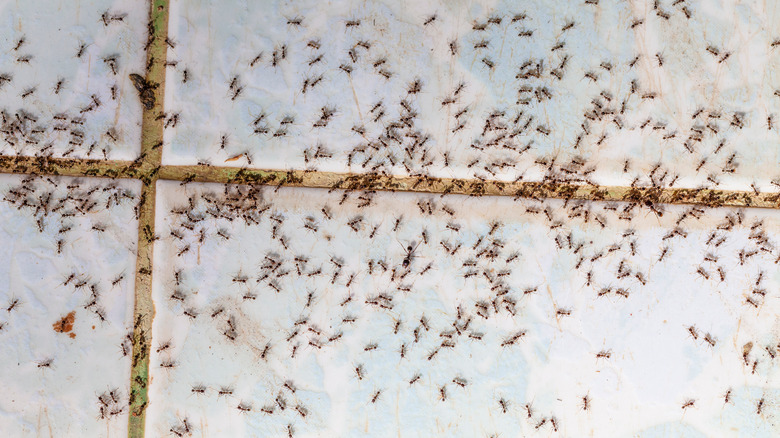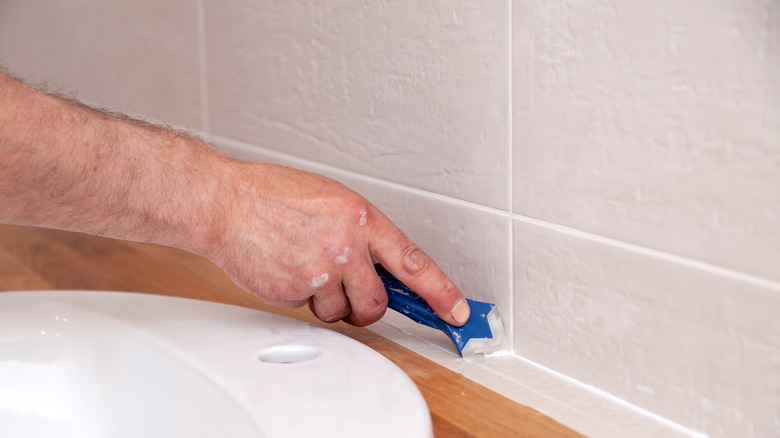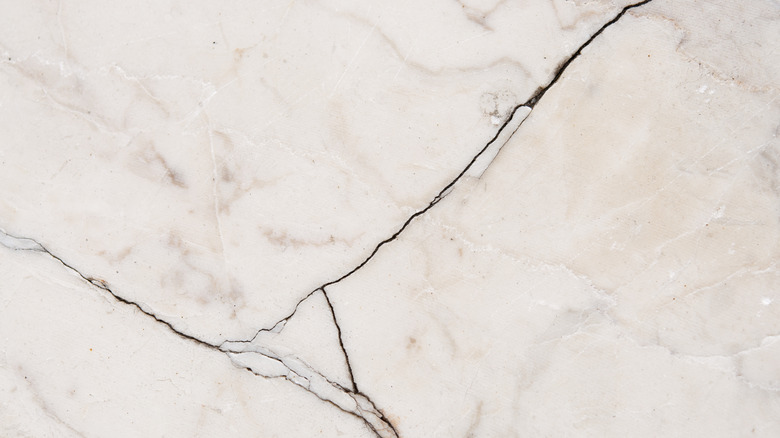The Home Maintenance Mistake That's Secretly Attracting Pests
Bugs are pesky, unwanted house guests. We do what we can to keep them out, though there is one home maintenance issue that many of us do not even think of when considering pet control: keeping tiled floors in good condition. Bugs love to hide in any crevice they can find, including in broken tiles in bathrooms or kitchens, an issue that persists in restaurants as well.
Part of the problem with broken tiles isn't just that the little buggers can fit in there; it's that other elements can too. A broken tile is a haven for pests who love damp environments. Particularly for an area like the bathroom where moisture is a near-constant environmental hazard, broken tiles allow the dampness to seep in, which not only attracts pests but could potentially harm the subfloor as well.
Some of the most common broken tile bugaboos are cockroaches, ants, and silverfish. These tricky little guys love to wiggle into crevices we might not even perceive with the naked eye. So, to them, a cracked tile is practically a hideaway mansion, and dealing with your cracked tiles is a vital step in your pest control plan.
Easy fixes to keep the bugs at bay
Depending on the severity of the tile cracks, you may be able to fix the pest access without fully replacing the tiles. If the cracks are small enough, you can use some epoxy and paint to seal them and reduce their unsightly appearance. This fix will be for very minor cracks, particularly those that aren't deep enough for the tile to move independently from the cracked piece.
For more significant cracked tiles, caulk is another easy-fix option. Before sealing the crack with the epoxy, pull up the loose piece, put some caulk on the bottom of it, place it back down, and let it dry. By choosing to use caulk on the bottom of a broken tile, you can better secure it to the floor or wall, reduce how much moisture can be trapped under it, and therefore reduce the number of pests seeking refuge there.
These fixes aren't necessarily permanent solutions. That said, they will do in a pinch or at least until the tile can be replaced properly. Your buggy houseguests will be annoyed, and you won't have to worry as much about spotting a cluster of ants as you step out of the shower.
How to avoid cracked tiles from the start
The best way to prevent pests from infiltrating your home by way of cracked tiles is to avoid cracked tiles in the first place. Some bugs like grout mites couldn't care less whether your floors are cracked or not. But larger pests like ants can be thwarted with careful floor care.
If you're installing new flooring, the easiest way to avoid cracks (though they are inevitable over time) is to not skimp on installation. A lot of cracks can be avoided when the floors are properly installed with quality tiling. When the subfloor or concrete isn't prepared correctly, or the adhesive isn't applied well, you are bound to have issues much earlier than you should.
When you're living in a home that already has a tile floor, you can't go back in time to prevent potential installation mishaps. What you can do instead is to be kind to your floors. Try to lay heavy items down gently to avoid pressure cracks. Dropping heavy furniture or objects onto tile is one of the easiest ways to crack or damage it. Through maintenance and care, it is possible to prevent insects from turning your tile floors into the Palace of Pest-sailles.


